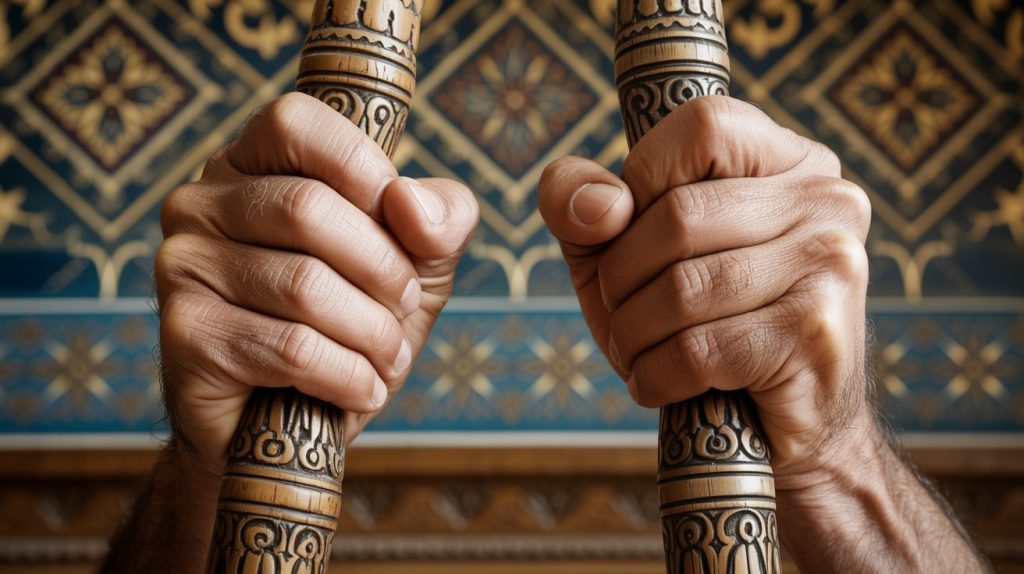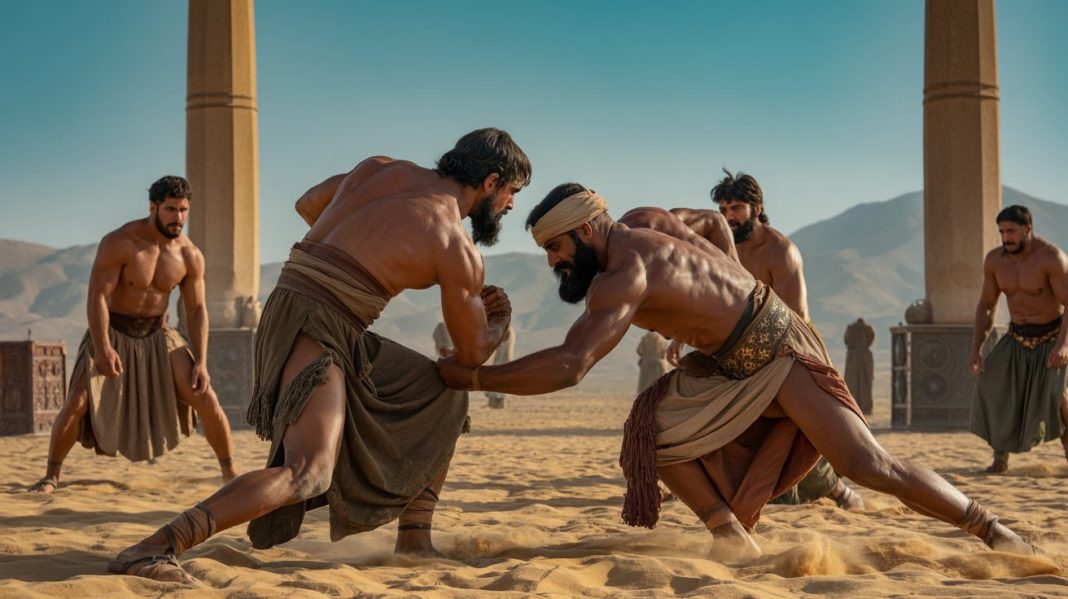Rooted in Persian history, Pahlevani — also known as Varzesh-e Pahlavani or “heroic sport” — combines wrestling, strength training, ethics, and spirituality. Once practiced by warriors of the Persian Empire, it survives today in traditional gyms called Zurkhaneh, blending martial arts, music, and moral discipline.
Origins of an Ancient Warrior Tradition
Pahlevani traces back over 2,000 years, to pre-Islamic Persia, when warriors trained for battle using a mixture of wrestling, weightlifting, and ethical philosophy. The word Pahlavan means “champion” or “hero” — not just physically strong but morally upright.
These fighters followed principles of honor, humility, and protection of the weak, making the art both physical and spiritual.
After the Islamic conquest of Persia, Pahlevani adapted but retained its old structure. The training halls, called Zurkhaneh (“House of Strength”), became sacred spaces where athletes trained to rhythmic drumming and recitations of Persian epic poetry like Shahnameh.
The Training and the Tools
Inside the Zurkhaneh, students train barefoot on a circular pit floor called the gaud. Training mixes gymnastic movements, rhythmic calisthenics, and wrestling drills.
Common tools include:
- Meel (wooden clubs): Symbolize ancient maces once used in battle.
- Kabbadeh (iron bow): Strengthens shoulders and back, echoing the bows of ancient warriors.
- Sang (wooden shields): Used for resistance and conditioning.
- Push-ups and spinning exercises: Build stamina, coordination, and balance.
Each movement is done in rhythm with traditional drums (zarb) and chants led by a master, creating a spiritual and almost ritual-like environment.

Gender, age, and who trains
Historically Pahlevani and zurkhaneh practice have been male-dominated and many traditional spaces still prohibit women from participating. In recent years, activists and female athletes have pushed to reclaim access and visibility for women in strength traditions — there are community projects and small groups of women practicing and promoting adapted forms — but social and institutional barriers remain in many areas.
Is Pahlevani practical for modern self-defense or streetfighting?
For modern self-defense: Pahlevani builds exceptional functional strength, balance, coordination, and close-range grappling ability — all useful attributes in a self-defense scenario. Its wrestling and conditioning components translate well to controlling an assailant, grappling, and escaping holds.
For streetfighting: Pahlevani is not a striking art; it focuses on throws, holds, and explosive strength. In an unregulated street fight that includes strikes and weapons, Pahlevani alone is incomplete — but combined with striking training (boxing/Muay Thai) and situational awareness it becomes a very useful foundation.
Practicality verdict: Excellent for fitness, clinch control, and grappling; less practical alone for bare-knuckle striking or multiple-attacker violence. Emphasize training that includes scenario work, awareness, and simple defensive tactics to adapt Pahlevani skills to real-world threats.

Training notes, safety, and how to get started
Start with a coach: Seek a qualified instructor or a wrestling/functional strength coach who understands movement patterns.
Progressive conditioning: Meel and kabbadeh work require progressive load and technique coaching to avoid injury.
Complementary training: Add striking, situational awareness, and legal/ethical training for real-world self-defense use.
Cultural respect: If training in a zurkhaneh, respect the ritual and etiquette — it’s a living cultural practice as well as a sport.
Popularity in Iran today
Pahlevani retains cultural prestige in Iran and is visible at festivals, cultural events, and in some sports programs. Its zurkhaneh rituals and practices are still performed in cities and regional centers as a form of cultural heritage and athletic tradition. UNESCO’s recognition helped preserve and spotlight the practice internationally.

Philosophy and Ethics
A Pahlavan is expected to embody justice, humility, courage, and generosity. The moral code is inspired by Zoroastrian and Sufi traditions, teaching that physical strength must serve moral purpose.
Pahlevani is seen not just as self-defense, but as self-purification — a way to discipline the body, ego, and soul.
Modern Recognition
UNESCO recognized Varzesh-e Pahlavani and Zoorkhaneh rituals as Intangible Cultural Heritage of Humanity in 2010.
Today, the art still thrives in Iran, and its influence has spread to other regions interested in ancient strength training and warrior ethics.


